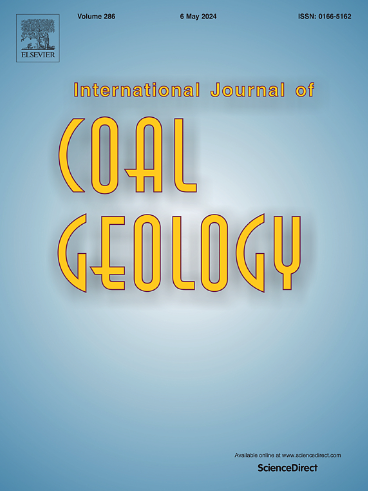沁水盆地南部煤层气富集机制:构造-岩性-水动力耦合的协同作用
IF 5.7
2区 工程技术
Q2 ENERGY & FUELS
引用次数: 0
摘要
沁水盆地以其厚、横向展布的煤层、高热成熟度和巨大的煤层气潜力而闻名。然而,多期构造活动导致的储层非均质性导致煤层气富集程度的显著变异性,给高效开发带来了挑战。本研究利用地震资料、测井资料和含气量分析,探讨了沁水盆地南部单个和耦合构造、顶底板岩性和水动力因素对煤层气成藏的影响。从北向南可识别出4种不同的煤层气富集模式:在浅层煤层中,大气降水驱动的地下水补给与背斜构造共同控制着天然气的空间分布;随着埋深的增加,地下水流动性的降低和顶底板密封性的提高使主要控制因素从水动力因素转向岩性因素;在构造斜坡带,天然气富集受鼻状构造和水动力密封的耦合控制;在断裂为主的地区,天然气沿断裂运移和断裂带的封闭性是主要控制因素。研究结果为地质复杂盆地煤层气勘探开发优化提供了科学依据。本文章由计算机程序翻译,如有差异,请以英文原文为准。
CBM enrichment mechanisms in the Southern Qinshui Basin: A synergistic role of tectonic-lithological-hydrodynamic coupling
The Qinshui Basin is renowned for its thick, laterally extensive coal seams, high thermal maturity, and significant coalbed methane (CBM) potential. However, reservoir heterogeneity resulting from multi-stage tectonic activity leads to pronounced variability in CBM enrichment, posing challenges for efficient development. This study examines the influence of individual and coupled tectonic, roof–floor lithological, and hydrodynamic factors on CBM accumulation in the southern Qinshui Basin, using seismic data, well logs, and gas content analysis. Four distinct CBM enrichment models are identified from north to south: in shallow seams, atmospheric precipitation-driven groundwater recharge, coupled with anticlinal structures, controls the spatial distribution of gas; with increasing burial depth, reduced groundwater mobility and improved roof–floor sealing shift the dominant control from hydrodynamic to lithological factors; in structural slope zones, gas enrichment is governed by the coupling of nose structure and hydrodynamic sealing; In fault-dominated areas, gas migration along faults and the sealing capacity of fault zones are the primary controls. These findings provide a scientific basis for optimizing CBM exploration and development in geologically complex basins.
求助全文
通过发布文献求助,成功后即可免费获取论文全文。
去求助
来源期刊

International Journal of Coal Geology
工程技术-地球科学综合
CiteScore
11.00
自引率
14.30%
发文量
145
审稿时长
38 days
期刊介绍:
The International Journal of Coal Geology deals with fundamental and applied aspects of the geology and petrology of coal, oil/gas source rocks and shale gas resources. The journal aims to advance the exploration, exploitation and utilization of these resources, and to stimulate environmental awareness as well as advancement of engineering for effective resource management.
 求助内容:
求助内容: 应助结果提醒方式:
应助结果提醒方式:


